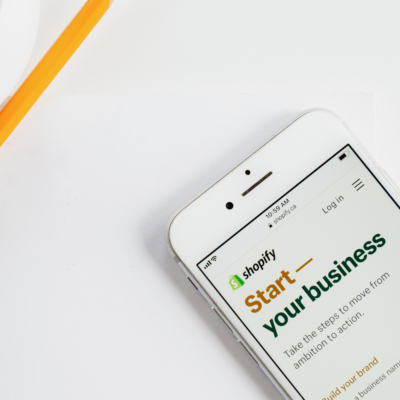Whether you’re thinking about opening an online store or scaling your business, finding the right e-commerce platform to sell your products is a vital, yet often confusing, first step.
Shopify is probably the most popular and well-known e-commerce platform and store builder available today. Offering a multi-channel integration, a range of price plans to suit your budget and business needs, and a famously easy-to-use interface, Shopify is the go-to e-commerce website builder for many businesses.
But while Shopify is one of the most famous e-commerce platforms, that doesn’t necessarily make it right for you.
In this Shopify review, we’re going to look at what makes Shopify so special, whether the advertised key features are all they’re made out to be, and offer an unbiased view on when Shopify may/may not be suitable for your business.
What is Shopify?
Shopify is a multi-channel e-commerce platform designed to make building, growing, and running an online store easier than ever.
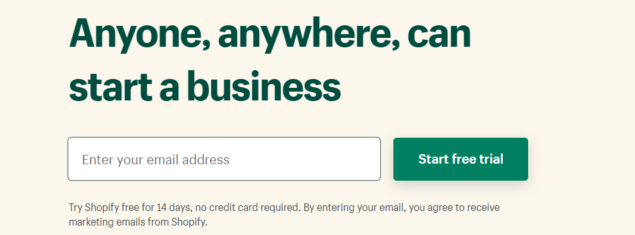
It was initially conceived in 2004 when a young German living in Canada needed an e-commerce solution to sell snowboards online. Unable to find a platform that worked for him, he gathered his friends and got to work on their online store: SnowDevil.
After building their website, the founders of Shopify realized they’d created an e-commerce platform that could help others sell products online. In 2006, Shopify as we know it was born.
Fast-forward several years… Shopify is now the #1 online store building tool around the world. Hosting over 1,700,000 businesses in 175 countries, Shopify has offices worldwide, over 3,000 employees, and is responsible for $200+ billion of online sales.
Shopify features: an overview
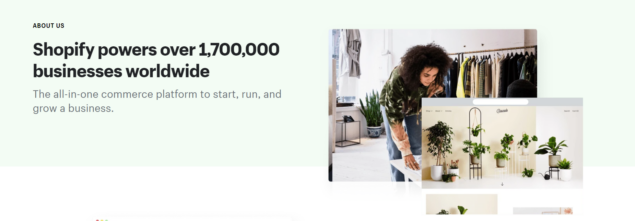
The genius of Shopify is in its simplicity and customization. By allowing store owners to build a professional and usable website without any coding, software installations, or hosting services, it’s the perfect place for budding e-commerce entrepreneurs to take their first steps into the world of online marketing.
The range of add-ons and extensions available in the Shopify app store means that there’s a solution to pretty much any problem you can think of (although some of these can be pricy – more on that later). Business owners familiar with HTML and CSS can also utilize their skills to create a highly customized and unique virtual presence for their store.
Shopify offers a wide range of features designed to make your online store run smoothly and profitably. Starting as a website builder, Shopify themes enable non-techy business owners to build an online store without any need for coding, yet they are all adjustable if HTML or CSS are your thing. You can even sell not more than one product with Shopify. Check out these single product Shopify themes.
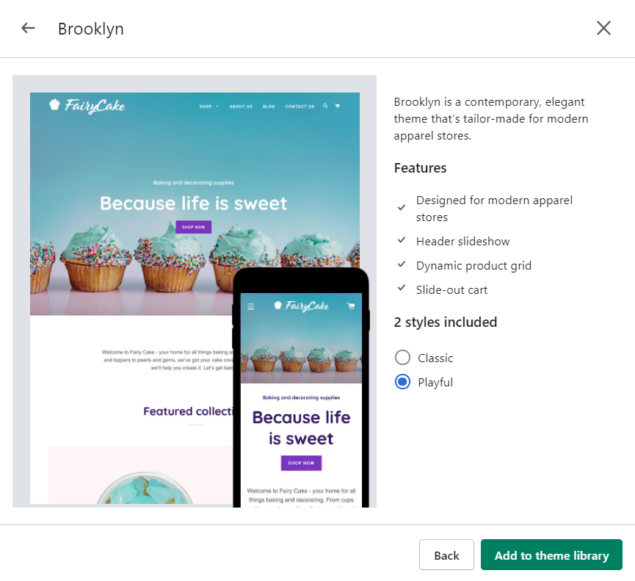
Shopify payments enable you to process customer orders without transaction fees, and you can also integrate other payment methods to benefit your customers.
As a complete web hosting platform, Shopify offers unlimited bandwidth, instant upgrades, and an all-in-one solution to your online store hosting needs. Your Shopify store will also be protected with a 256-bit SSL certificate and level-1 PCI compliance, so your business data and customers’ information is always secure. The Shopify support team is available 24/7 via telephone, live chat, or email.
Shopify point of sale POS tools are a really beneficial way of integrating face-to-face sales with your online store. Using POS hardware or the app, you can easily take credit card payments and Shopify will automatically update your reporting and inventory to keep your admin simple.
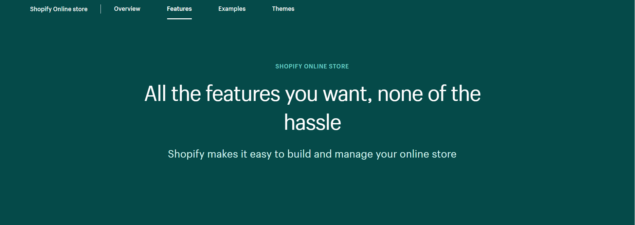
Shopify offers so many features to its customers that we can’t list them all here!
However, we will dive deeper into some of the key features so you can see if this platform is the right choice for your business.
Shopify pricing
When running an online store, any e-commerce business owner knows flexibility is key. New businesses don’t want to be paying for loads of premium features they’ll never use. In contrast, more established e-commerce stores need more payment methods, support, automation, and even user accounts.
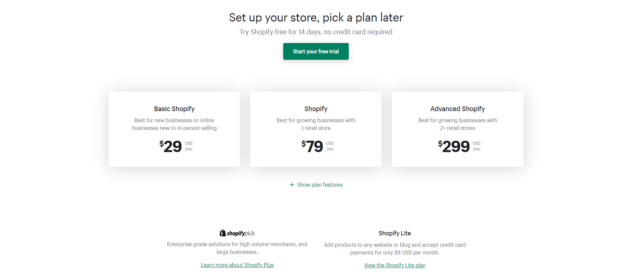
True to its goal of being an e-commerce platform for everyone, Shopify offers a range of plans to suit your business. These are:
Shopify Lite: $9 per month
Shopify Lite is a great way to transform your existing website into an e-commerce store in seconds with “Buy Buttons.” You’ll also get a POS app, so you can integrate sales from a physical store with online sales and more efficiently manage inventory and reporting.
Shopify Lite also incorporates a wide range of marketing tools, learning resources, and 24/7 customer support.
Basic Shopify: $29 per month
The Basic Shopify plan is best for new businesses or online stores looking to move into in-person sales. The plan includes complete e-commerce website and blog hosting, the ability to sell unlimited products, 24/7 customer support, and more. It’s worth noting there are 2% transaction fees applicable for any sales not made via Shopify Payments with Basic Shopify.
Shopify: $79 per month
This medium-level plan is perfect for e-commerce businesses with a single retail store looking to grow and benefit from additional services, plus up to five staff accounts. It includes all the features and perks of the lower plans, plus extras, including gift card creation, and a reduced 1% transaction fee for sales that aren’t made via Shopify Payments.
Advanced Shopify: $299 per month
If you’re a growing business with two+ retail stores, the Advanced Shopify plan is a great option to help scale up. Although the price seems quite a leap, it includes many more features, like the advanced report builder and specialist third-party calculated shipping rates. There’s also a reduced transaction fee for sales made outside Shopify Payments, bringing it down to just 0.5%.
Shopify Plus: Custom pricing
This option is best for large-scale, enterprise-level businesses with large budgets to spend on hosting, marketing, and premium Shopify features. Prices start at $2,000 per month, but you will need to contact Shopify for a custom quote.
14-day free trial
All of Shopify’s plans come with a 14-day free trial, so you can test the platform totally risk-free. We like that you don’t need to enter your payment information to benefit from the free trial, so there’s no concern about forgetting to cancel and being charged if you decide it’s not for you.

It’s worth remembering that, although Shopify is a website host, if you want a custom domain name, you will have to pay for this in addition to the Shopify plan you select. You can buy custom domains directly through Shopify or import one from a third-party domain registrar. Otherwise, your URL will look something like YOURSTORE.shopify.com.
How to get started with Shopify
Across all plans, Shopify is one of the most accessible options for building an online store. With an intuitive website builder, in-built hosting, and drag-and-drop capabilities, plus hundreds of free and paid themes to choose from, creating the perfect virtual presence is effortless.
1. Getting started
To get started with Shopify, all you need to do is enter your email address, password, and store name. The system will alert you if your desired name has been taken, so you may need to play around a little to find a unique name that works for your business.
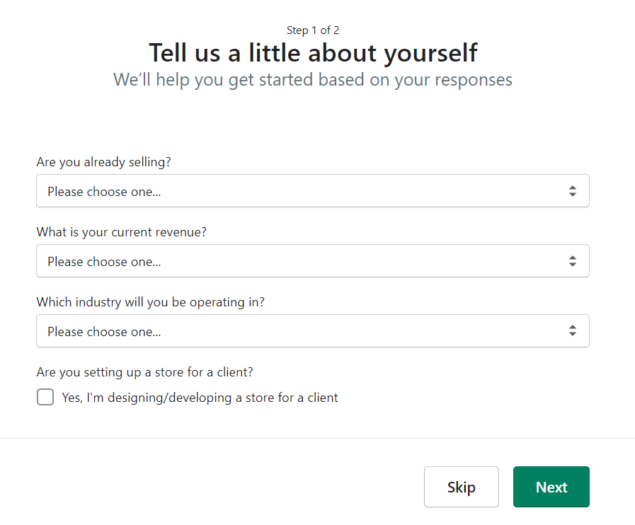
You’ll also be asked a few questions about your business and goals. It’s worthwhile answering these as accurately as possible to help determine which plan to choose when your free trial is over.
You don’t have to enter your credit card information to use the free trial.
2. Customization and themes
Once you’ve entered the requested information to start your Shopify store, you’ll be taken to your dashboard. Here, you’ll have the option to “select a plan,” or you can get right on with customizing your store and checking out the learning resources.
Hitting the “customize theme” button on your dashboard will take you to the Shopify themes page. There are multiple free and paid themes to choose from, and we liked that the free themes are separated, so you don’t need to get your heart set on a look that’s out of budget! You can also upload a custom theme.
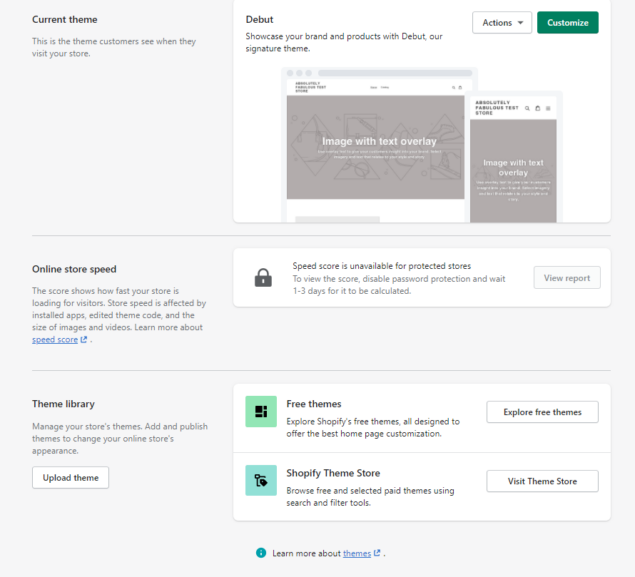
When you add a theme to your library, you’ll need to ‘publish’ before it becomes the theme for your Shopify store. You can customize before or after publishing.
The Shopify theme customization page, we’re happy to report, is as intuitive as people say. You can easily adjust the theme colors, fonts, social media icons, and pretty much anything else you can think of for all your landing pages. This enables even the least technical-minded business owner to develop unique landing pages that look great with minimum effort.
If you’re comfortable with HTML, CSS, and Liquid, you’ll also be able to edit the theme code for a truly personalized experience.
All Shopify themes come with vital features, including:
- Customizable sections
- SEO (search engine optimization)
- Drop-down navigation
- Free theme updates
- Responsive, mobile-friendly design
- Social media icons
- Built-in but adjustable styles and color palettes
- Free stock photos from Burst
Some themes will also include multiple language options. You can see what features come with each theme on the ‘Explore’ page.
3. Products
Once you’re happy with how your store looks, it’s time to add some products to sell! There’s a handy resource on this page to help you find products, or you can click ‘Add product’ to get your first item online.
Here, you can create a title, write a product description, add images and videos, set the pricing, list the SKU and barcode, and save the shipping weight. A helpful feature is the ability to allow Shopify to calculate profit and margins. There’s even a box to tell Shopify if the item is taxable.
You can also add variations to your product, such as sizes, colors, or materials, but only three, which is a little restrictive.
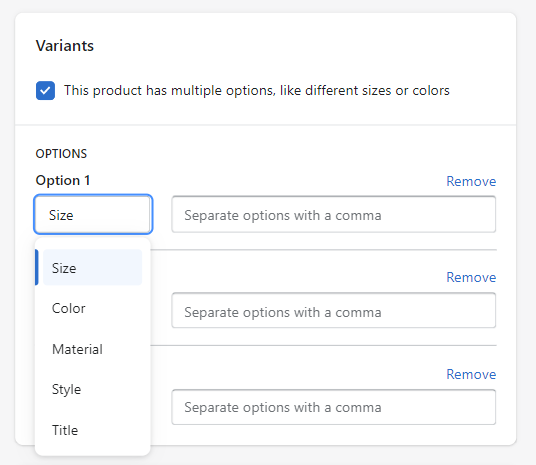
Going further down the page, you’ll find inventory and shipping options. These enable you to quickly calculate shipping costs and ensure you’re not accidentally selling out-of-stock items.
To the right, you’ll find organization tools. Here, you can add tags, enter the product type, specify a vendor, and add products to a ‘collection’ (category) to make them easier to find within your store.
At the very bottom, there’s a handy SEO tool that lets you see how your product title, URL, and description will appear in a search engine listing.

If you’re selling digital products, you will need an add-on app developed by Shopify. This is free, so you don’t need to worry about extra costs, but it is another step to be aware of. It’s a little tricky to sell subscriptions or take recurring payments, too, but you can download an app to help with this or have a developer code one for you.
Managing discount codes, gift cards, and promotions is surprisingly easy in the backend of your store, where you can even combine discounts with ‘compare at prices.’ You can also manually enter discount codes, gift cards, or set up systems to apply automatic discounts to a number of products at once (great if you have a sale on!).
4. Payment processing and transaction fees
Customizing the checkout process is simple with Shopify, and there are way more options than we expected.
First, choose whether customer accounts are disabled, optional, or required and whether you want to allow checkout using telephone or email (for shipping updates). There’s an option to link to the Shop App (a shipping tracker) on the order status page, and you can also allow customers to send a tip, and/or trial automatic order processing.

In the payment providers section, you can dictate which payment methods your customers can use at checkout. By default, this will be the Shopify Payments gateway, which allows you to accept funds from major credit card providers, including:
- Visa
- Mastercard
- Amex
- Discover
- JCB
- Diners Club
- Elo
- Shop Pay
- Apple Pay
- Google Pay
You can also enable alternative payment gateways for your customers. PayPal and Amazon Pay can be turned on with the click of a button, and other third-party providers, alternative payment methods, and manual payments are all pretty easy to set up.
This range of acceptable payment gateways is highly convenient for customers. However, it’s worth being aware that Shopify charges a 2%, 1%, or 0.5% transaction fee (depending on your plan) if you don’t use Shopify payments.
What’s more, you can’t use Shopify Payments everywhere so if you want to set up a multinational store you’ll need to give this some thought. At the time of writing, Payments are available in:
- North America (the USA and Canada)
- Europe (Austria, Belgium, Denmark, Germany, Ireland, Italy, Netherlands, Spain, Sweden)
- The UK
- Asia (Hong Kong, Japan, Singapore)
- Australia
- New Zealand
If you’re based outside of these areas, you will need to consider an alternative payment gateway and deal with the transaction fees until/unless Shopify expands its program (there are rumors of Payments launching in other countries, but we don’t know how reliable these are yet).
5. Shipping
An efficient shipping system is essential for any e-commerce seller, and Shopify works hard to save you time and money here.
You set up shipping rules from the backend of your Shopify store and can adjust these to suit individual products, specific collections, or the entire store.
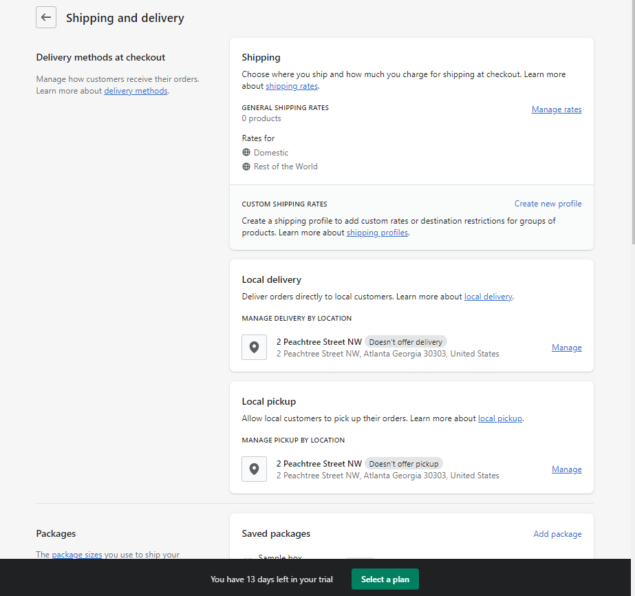
If you’re on the Advanced Shopify or Shopify Plus plans, you’ll be able to utilize Shopify’s live shipping rates. Shopify Live Shipping connects you with local carriers (such as DHL Express, UPS, and USPS) to provide accurate shipping costs to the customer at checkout. It also lets you buy discounted shipping labels: quick, easy, and money-saving.
Live shipping can be purchased on lower-level plans for around $20 per month. If you switch your plan from a monthly to a yearly subscription, you’ll also be eligible for this feature, although you’ll need to contact Shopify to request it.
Alternatively, you can benefit from adding a shipping app to your store.
US and Canadian stores can also join the Shopify Fulfilment Network. Here, products can be stored, selected, packed, and shipped from fulfillment centers all around the US with faster or even same-day delivery, free or branded packaging, and discounted rates.
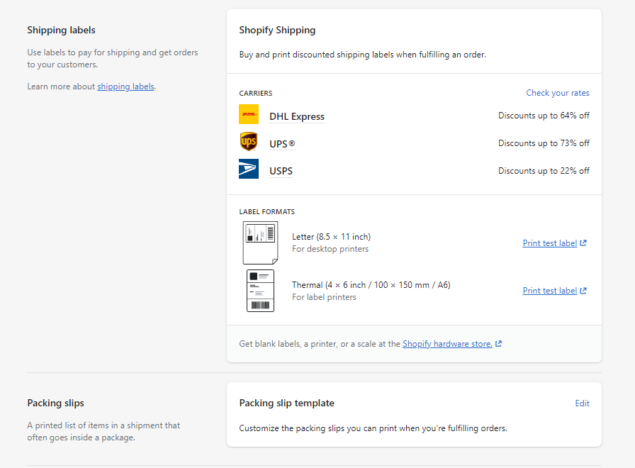
Since 2020, Shopify has also upped its game with local and curbside pickups for contact-free delivery. This allows customers to avoid shipping fees at the point of sale and makes using Shopify during the coronavirus pandemic a little safer.
Dropshipping
Naturally, no Shopify reviews would be complete without mentioning dropshippers! as Shopify is the leading solution for e-commerce dropshippers.
Shopify allows you to connect your store to several dropshipping providers, including Amazon, Shipwire, and Rakuten. You can also add free and paid apps – like Oberlo or Dropified – via the Shopify app store.
6. Marketing
Shopify offers plenty of assistance to ace your marketing, from building in-depth customer profiles to the ability to integrate a third-party app such as Pinterest, Snapchat Ads, Microsoft Advertising, Google & Facebook Ads, and much more.
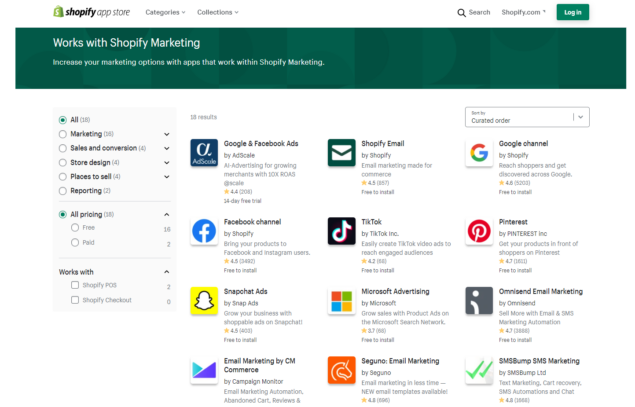
From the marketing tab, you can easily create, run, and manage your campaigns. It’s even possible to automate tailored messages to customers, use SMS to recover sales, and maximize your abandoned cart recovery with automated emails.
Generally, Shopify stores will advertise on social media, Google, and beyond using the Pay Per Click (PPC) or Cost Per Click (CPC) model. One of the best Shopify apps for managing your PPC ads when you don’t have much experience or time is sixads.
sixads lets you effortlessly integrate targeted Facebook, Instagram, and Google ads with your Shopify store from a single dashboard. Setting up your marketing and remarketing campaigns is fast and efficient and you’ll even benefit from automatic updating, so if your product is out of stock or your descriptions change, you don’t need to worry about manually updating/removing your ads.
Also in the marketing tab, you can track your marketing sales channels. This includes a cost/profit analysis, so you can easily monitor how successful and your various campaigns have been.
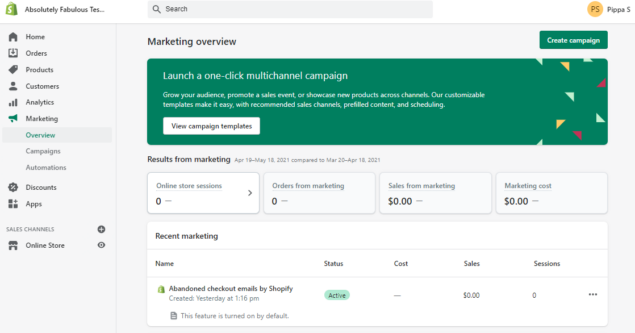
Shopify’s abandoned cart recovery system is straightforward and features some decent customization options, including the ability to dictate how long after a cart has been abandoned the reminder should be sent. You can even include a discount or gift card to abandoners to encourage them to complete the checkout process.
It would be nice to see popups or banners to help abandoned cart recovery and maximize customer retention, which aren’t included “out the box” with Shopify. However, some apps and add-ons can provide this.
In addition to abandoned cart recovery, Shopify enables you to create a blog as part of your online store and offers plenty of support when it comes to search engine optimization to maximize your brand’s visibility.
7. Face-to-face sales
Although Shopify is obviously set up for online sales, many e-commerce business owners may also have a physical store, popup, or other face-to-face sales channel. With Shopify POS, you can integrate sales from anywhere to ensure you’re always on top of inventory and reporting.
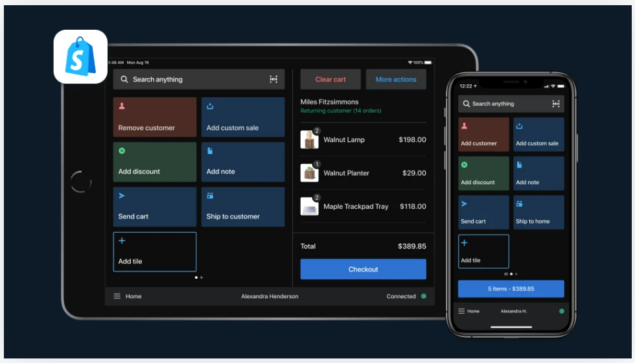
POS Lite is available on all Shopify plans, so any business can benefit from a fully integrated sales system.
If you have a Shopify Plus plan, you’ll also be able to prepare and manage your pickup orders via the POS app. This feature is also available on lower Shopify plans but will cost an additional $89 per month.
It is worth noting that Shopify POS hardware is only available for stores based in the US, Canada, or the UK. That said, there are plenty of third-party apps and devices you can connect instead.
8. Reporting
Depending on which plan you go for, Shopify offers different reporting systems and metrics to monitor your store’s success. All plans (including Lite) include access to the overview dashboard, finance reports (including taxes and payments), and product analytics, with more data available as you scale.
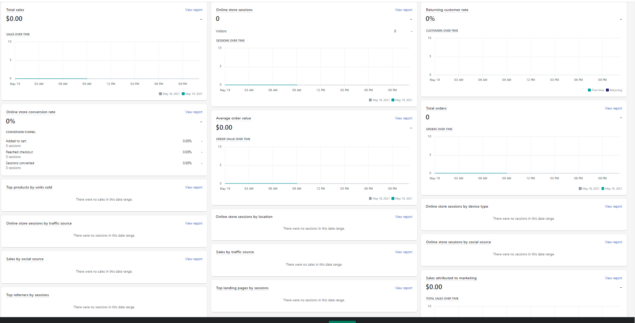
One of the best reporting features is Live View. This lets you see exactly how many people view your landing pages and provides insights into customer behavior to help optimize your store. There’s also an interactive graphic of the globe to tell you where your customers are based – which is handy when deciding which languages and currencies you want to allow.
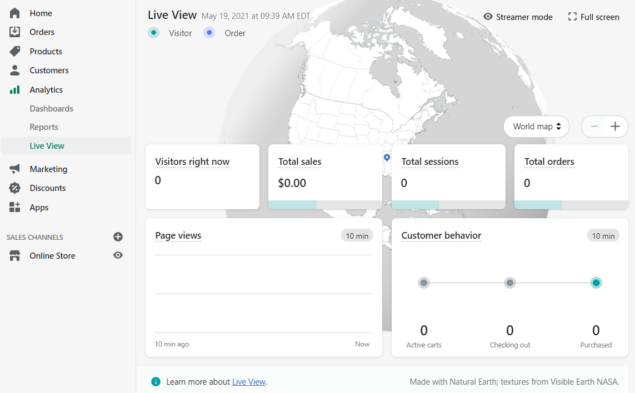
The discrepancy in available reports between the different price plans is one of the key disadvantages of using Shopify. Many Shopify alternatives provide full reporting access at every level, so this is a pretty major downside to the lower-cost plans.
That said, it is possible to connect third-party apps such as Google Analytics to your store to provide a more thorough overview (although not all data from Shopify Reports will be available in Google Analytics).
My Shopify review
Now that we’ve considered some of the critical features of Shopify, it’s time to consider if Shopify is the right platform for your website.
This will ultimately come down to your personal preferences and priorities, but we’ve tried to be as fair and thorough as possible to help you make an informed decision.
And don’t forget, you can always try Shopify for 14 days to see how Shopify works for your business.
1. Ease of use
Shopify is renowned for being easy to use and suitable for beginners. We must say, our experience of the platform definitely agreed with this reputation.
All the controls in the Shopify dashboard are pretty straightforward and nicely labeled. We couldn’t find a few sections initially, but the Shopify Help Centre contained plenty of information to make navigating to each essential section quick and easy.
Some of the sections (for example, products) looked a bit overwhelming at first glance. Still, once we got started, it was all relatively intuitive.
2. Themes and customization
There are hundreds of themes available in the Shopify store, and they’re easy to navigate with simple categorizations that should suit most businesses. The main downside here is that only 11 of the themes are free on the platform, and the paid themes can run up to $200!
That said, even the free themes are incredibly professional-looking and offer a wide selection of customization options to make your store unique.
All Shopify themes are responsive, meaning they’ll look great regardless of what device your customers use to visit your store.
3. Shopify shipping
Shopify provides plenty of options when it comes to shipping rates, and dropshipping is a breeze. Adding weights to your products is really convenient, and the third-party calculated shipping rates available on the Advanced Shopify plan are worthwhile.
Shopify is partnered with several couriers to save you the hassle of sourcing your own – DHL Express, UPS, USPS, and Canada Post. If you have your own courier, you can also set up shipping with them, and there are plenty of apps available offering extra shipping functions.
Dropshipping businesses can also use Shopify; a dropshipping app like the Oberlo Chrome extension will make the process significantly easier.
You can print shipping labels directly from your store’s backend, and it’s straightforward to set discounts such as free shipping rates and rules.
4. Shopify payment options and transaction fees
Shopify provides multiple payment options on all plans. To avoid transaction or credit card fees, you will need to use Shopify Payments, which is only available in certain territories.
You can link alternative payment gateways to your stores, such as Amazon, PayPal, or even cryptocurrencies; however, these transactions will incur a 2%, 1%, or 0.5% fee depending on your plan.
5. Accounting and Taxes
Taxes and accounting are often the bane of a business owner’s experience. Therefore, Shopify’s ability to automatically pull US tax rates is a huge perk. It can also figure out VAT and other taxes in Canada, Europe, the UK, Norway, Switzerland, Australia, and New Zealand.
If your store is based outside of these jurisdictions, you can manually add tax settings to streamline your store and minimize those tax-induced headaches.
6. SEO and marketing
Search engine optimization and quality marketing are essential for building brand awareness and driving traffic to your store. Shopify includes a range of features that make this easy, including a blog, help crafting SEO-friendly copy, and the ability to set up email marketing campaigns.

One of their best marketing features has to be the abandoned cart recovery emails, with plenty of customization options to help you target cart abandoners. The only downside here is that it doesn’t include a popup or banner, so it’s only applicable if you have the customer’s email address.
While Shopify’s email marketing capabilities might not be the best we’ve ever seen, they are useful for sending relatively simple emails from the Shopify platform. And you can always integrate a third-party app if you want a more sophisticated solution.
7. Physical stores connectivity
If you deal in face-to-face sales (or are thinking about it), Shopify can help by integrating transactions from all your sales channels. The Shopify POS Lite and reader are included in every plan, and there’s additional hardware you can purchase to take payments and keep your reporting straightforward.
8. Shopify customer support
Shopify customer support is available 24/7. This includes live chat, email, and phone support, so you have plenty of options to get through to a knowledgeable and helpful agent.
In our experience, we found the ability of an agent to actually help was a bit hit-and-miss, particularly if it was a technical question. However, they were all very friendly and helpful.
In addition to the support team, there’s a wealth of information available in the Shopify blog, FAQs, and you’ll find handy video guides throughout the dashboard.
9. Reporting and analysis
In all honesty, it’s the reporting and analytics that let Shopify down a little, and that’s simply on the basis that complete reporting information isn’t available on every price plan. While even the basic plans include some reporting, we think it’s a bit cheeky to withhold this data.
10. Shopify app store
When they said there’s an app for everything, they must have been thinking of the Shopify app store! Here, you can find anything from apps to streamline dropshipping, add further customization options to your store, aid with payment processing, and you can even add Google Analytics.
However, it’s worth being careful in the app store as not all the add-ons are free, and the price of your store can quickly escalate if you’re purchasing loads of extensions.
While there are some add-ons we wish were available ‘out the box’ with Shopify, there’s no denying that the platform offers plenty of opportunities to make your account precisely what you need it to be. Just do a bit of shopping around before you settle on an app to ensure it does everything you want it to at a price you can afford.
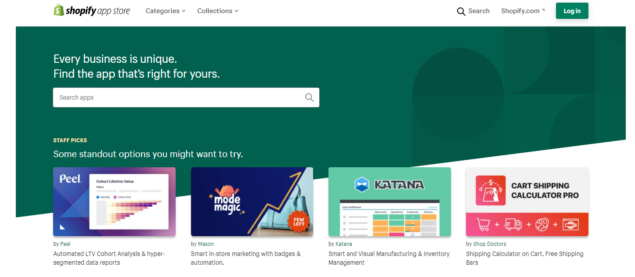
11. Security
Security might not be glamorous, but nor is getting hacked! Shopify provides premium security and protection to its stores and deals with updates automatically in the background, with no interruption to your day-to-day business.
All stores and systems run on Level 1 PCI compliant servers, and SSL 256-bit encryption enabled as standard.
12. Value for money
Arguably the most vital question when it comes to setting up your business is, “Is Shopify worth it?”
We found the ease of use, customization options, and flexibility of the stores - even on a lower price plan - really beneficial. There are many free apps to help you create the store you want, and even the free themes are professional and well made.
That said, it’s easy to see why some claim Shopify is expensive… It’s not because the price plans are out of budget.
If you add loads of extensions and apps, pay for a premium theme, and use alternatives to Shopify Pay, the costs quickly add up.
In the end, Shopify’s value for money is really what you make it. It can be an effective budget solution or a premium product. Just keep an eye out for extra charges!
Shopify review: pros and cons
Shopify Benefits
- Easy to use for beginners.
- There is no need for any technical knowledge or coding experience (although you can use this if you know how).
- All themes are responsive and mobile-friendly.
- Plenty of customization options in every category.
- Easy to scale.
- Loads of add-ons available with a large community of independent developers and experts ready to help.
- 24/7 support team.
- Plenty of learning resources and tutorials available.
Disadvantages of using Shopify
- Add-ons can make Shopify costly.
- Only 11 free themes.
- Pages have a URL structure that’s not ideal for SEO.
- Multiple languages are not a standard feature, although you can find themes/add-ons to create a bilingual store.
- Unless you use Shopify Payments (which isn’t available everywhere), you will need to pay a transaction fee on sales.
- Some alternatives to Shopify offer better marketing tools.
FAQ
Is Shopify any good?
Shopify is a powerful e-commerce platform and website builder that manages to pack a punch while still remaining user-friendly. It’s suitable for small businesses to seasoned pros alike and offers a wide range of customization options, price plans, and add-ons to help streamline your business.
Is Shopify safe and legit?
Shopify is committed to safety and security. Every store is encrypted with 256-bit SSL encryption, and the platform is fully compliant with Level 1 PPC regulations.
Is Shopify good for beginners?
Shopify is great if you’re new to e-commerce, as the tools and software make building a website and managing your business straightforward. Naturally, there are pros and cons to Shopify, and newcomers should be careful of added fees when setting up.
Overall, Shopify is great for beginners to pros and makes scaling your business a breeze.
Can I make money with Shopify?
Shopify is a hosting platform that allows you to publish and run an online store. You can sell almost anything in your store, and there are even options to enable digital sales (for example, photos, movies, music, or documents). Shopify also offers various reporting and analytic data to enable you to monitor your progress, and you can link up face-to-face sales with Shopify POS systems and hardware.
Shopify review: final thoughts
Overall, we were really impressed with the availability of features and how straightforward Shopify is to use with no experience. We might have liked to see more free themes, and the lack of reporting on the more basic plans was a bit disappointing, but overall, we found it a good platform that should suit most business needs.
With powerful tools, professional templates, comprehensive customer service, and plenty of added extras, Shopify is an excellent choice for beginners and pros alike.
